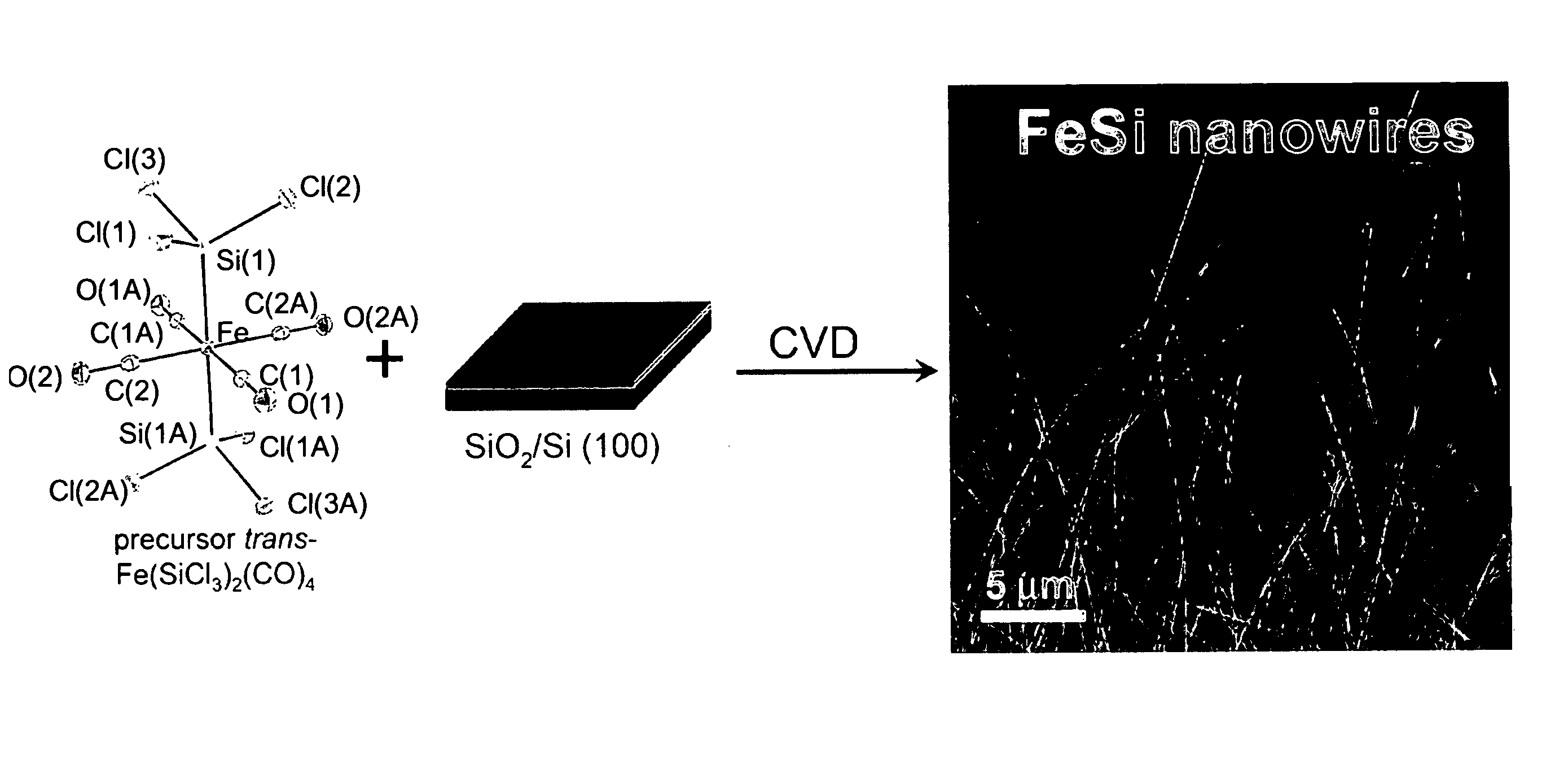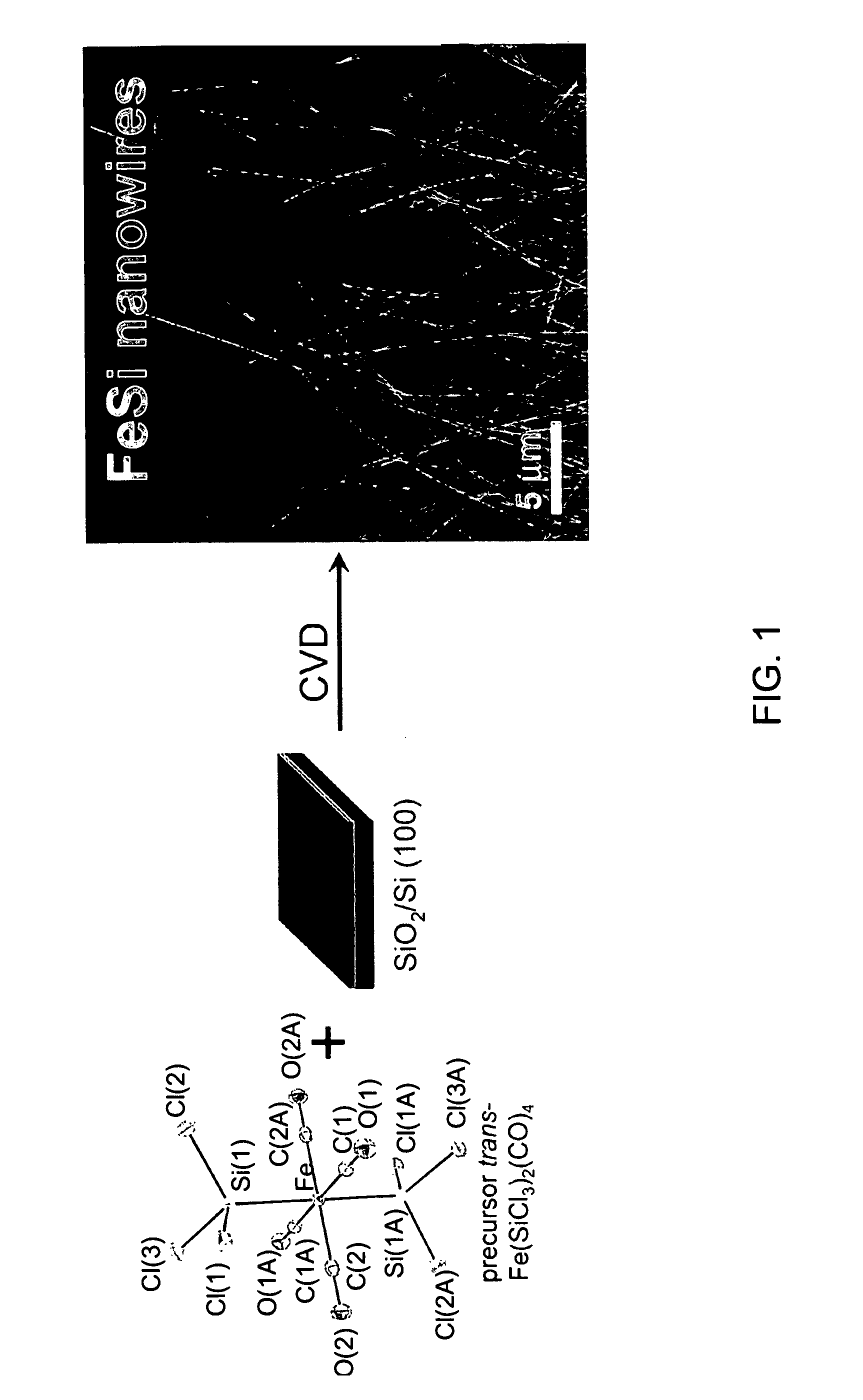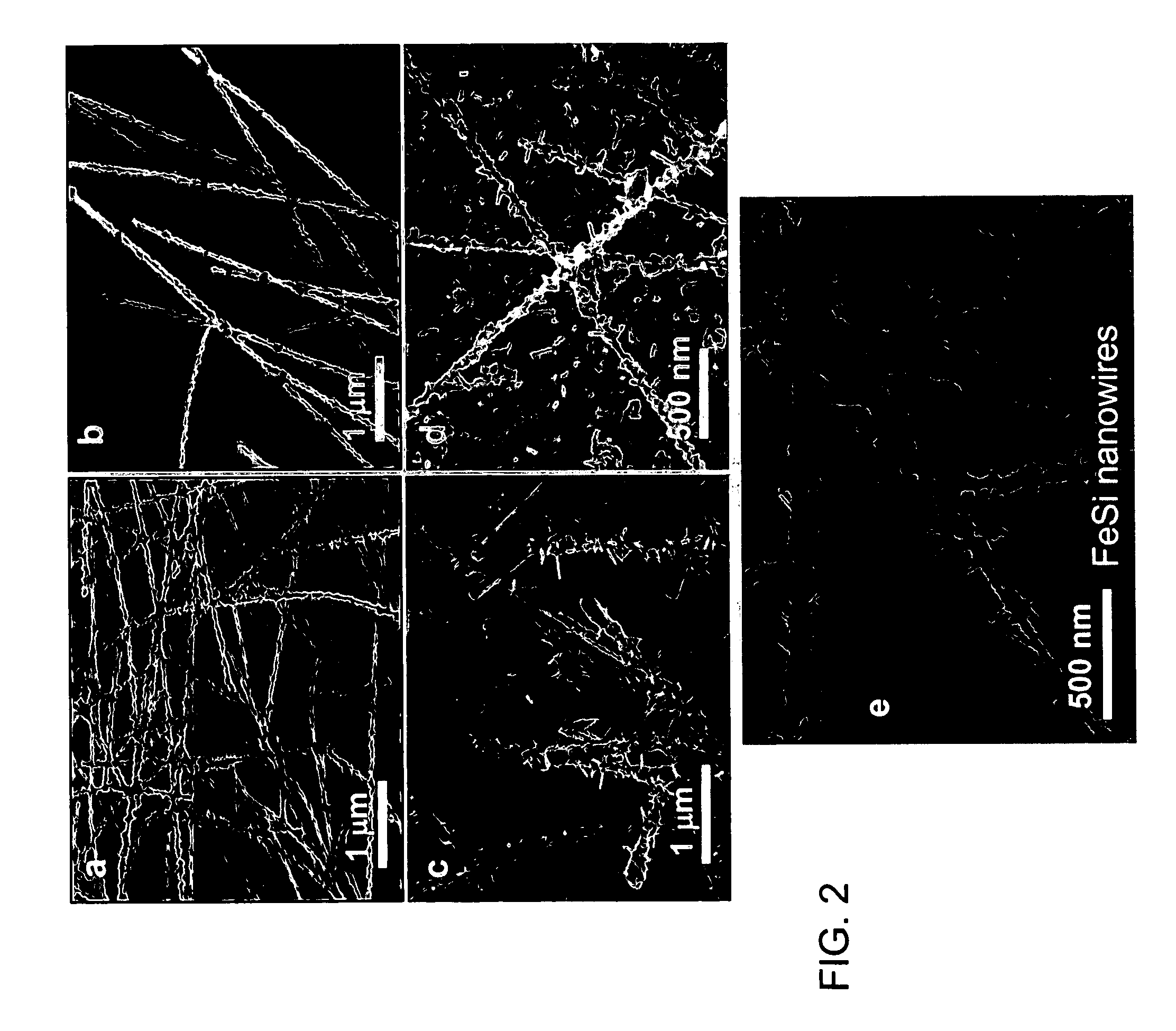Metal silicide nanowires and methods for their production
a technology of metal silicide nanowires and metal silicide nanowires, which is applied in the direction of thin material processing, semiconductor/solid-state device details, semiconductor devices, etc., can solve the problems of general and rational chemical synthesis of these nanomaterials, dictating the success or failure of any silicon-based spintronic device, and inconvenient growing techniques
- Summary
- Abstract
- Description
- Claims
- Application Information
AI Technical Summary
Problems solved by technology
Method used
Image
Examples
example 1
Unbranched FeSi Nanowires
[0039]Precursor Formation: The metal carbonyl-silyl organometallic single source precursor, Fe(SiCl3)2(CO)4 was synthesized from Fe3(CO)12 and SiHCl3 following a procedure modified from Novak et al., Organometallics, 16, 1567 (1997), the entire disclosure of which is incorporated herein by reference. Briefly, SiHCl3 (Aldrich, ca. 10 mL, 99 mmol) and Fe3(CO)12 (Aldirch, 0.998 g, 1.98 mmol) were loaded into a thick-walled glass tube equipped with a Teflon valve and pumped down to 0.5 Torr. The sealed vessel was then heated at 120° C. under stirring for 2 days during which the color of the solution turned from green to orange within the first hour. Warning: Heating volatile liquid reaction mixture that generates gas in close containers can cause pressure built up and potential explosion! After cooling, the reaction mixture was transferred to a sublimation apparatus in a nitrogen filled glove box. Excess SiHCl3 was removed under dynamic vacuum and the resulting ...
example 2
Branched FeSi Nanowires
[0043]Nanowire Formation: FeSi nanowires were produced using the CVD method described in Example 1, except that the oxide layers on the silicon substrates were reduced. To produce the silicon oxide coated substrates, all of the substrates were first etch with HF to remove native oxide and then: 1) exposed to a “metal etch” solution (30% H2O2: 37% HCl: H2O=1:1:5 v / v) at 70° C. for 3 or 7 minutes; 2) exposed to ambient air at room temperature for 1 day followed by vacuum annealing at 500° C. for 30 min; or 3) exposed to ambient air at room temperature for 4 days.
[0044]Nanowire Characterization: SEM images of the nanowires showed that the nanowires were branched with secondary nanowires or nanorods extending outwardly along the length of the main nanowire. The secondary structures are shown in FIG. 2, which shows SEM images of the nanowires grown on a silicon substrate that was teched with HF and then: (a) exposed to the metal etch solution for 3 min.; (b) expose...
example 3
CoSi Nanowires
[0045]Precursor Formation: In a typical synthesis of the metal carbonyl-silyl organometallic single source precursor, Co(SiCl3)(CO)4, approximately 15 ml of SiHCl3 was added to 3.04 g of dry Co2(CO)8 placed in a Carius tube and cooled to—40° C. in an acetonitrile / dry ice slurry. The reaction tube was pumped down to 0.5 Torr, sealed and stirred at—40° C. for 2 hours before warming to room temperature. The reaction mixture was transferred to a sublimation apparatus in a glove box and the remaining SiHCl3 was removed with dynamic vacuum before sublimation at 40° C. and 0.1 Ton was carried out for 2 hours. The final product of yellow crystals collected on the cold finger weighed 3.65 g (a 68% yield). Sublimed crystals were suitable for single crystal X-ray diffraction study, which revealed identical cell parameters to those previously reported.
[0046]Nanowire Formation: CoSi nanowire formation was carried out using the equipment and procedure of Example 1, above, with the e...
PUM
| Property | Measurement | Unit |
|---|---|---|
| thickness | aaaaa | aaaaa |
| thickness | aaaaa | aaaaa |
| diameter | aaaaa | aaaaa |
Abstract
Description
Claims
Application Information
 Login to View More
Login to View More - R&D
- Intellectual Property
- Life Sciences
- Materials
- Tech Scout
- Unparalleled Data Quality
- Higher Quality Content
- 60% Fewer Hallucinations
Browse by: Latest US Patents, China's latest patents, Technical Efficacy Thesaurus, Application Domain, Technology Topic, Popular Technical Reports.
© 2025 PatSnap. All rights reserved.Legal|Privacy policy|Modern Slavery Act Transparency Statement|Sitemap|About US| Contact US: help@patsnap.com



